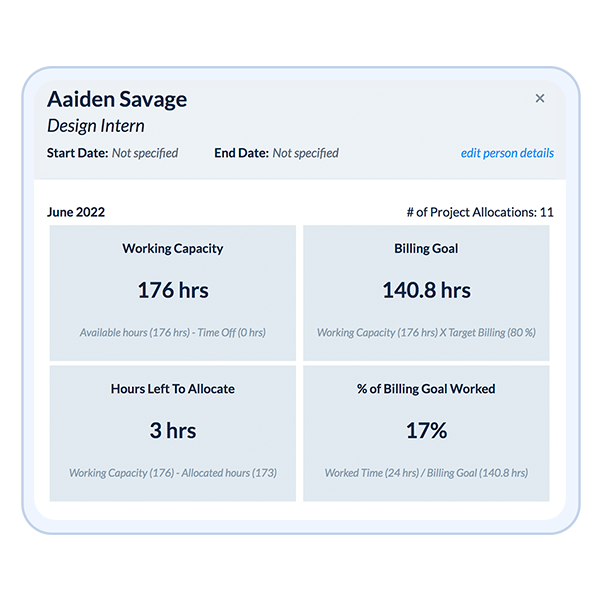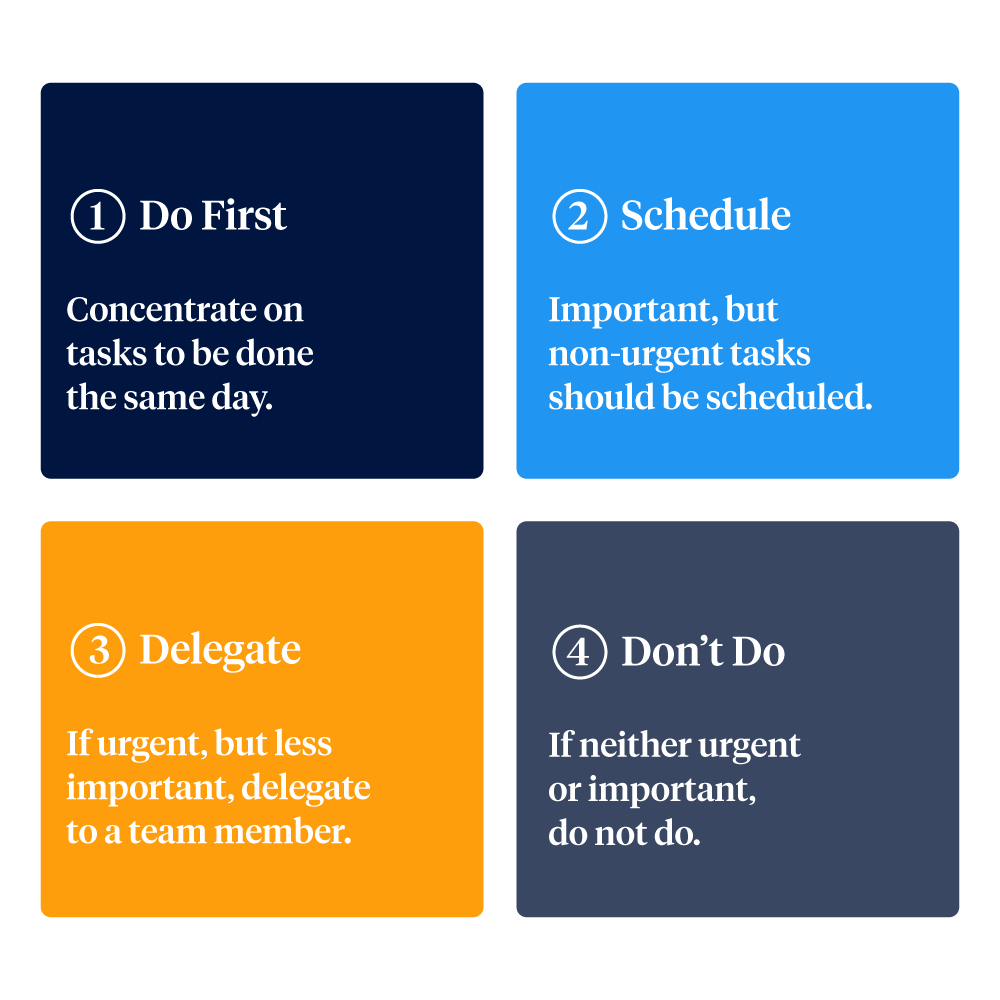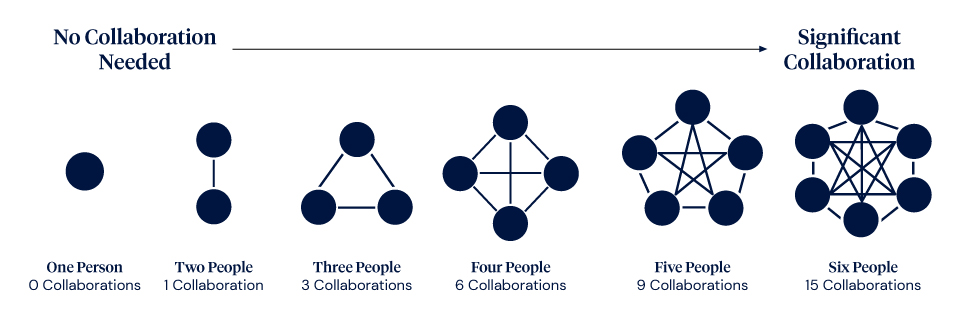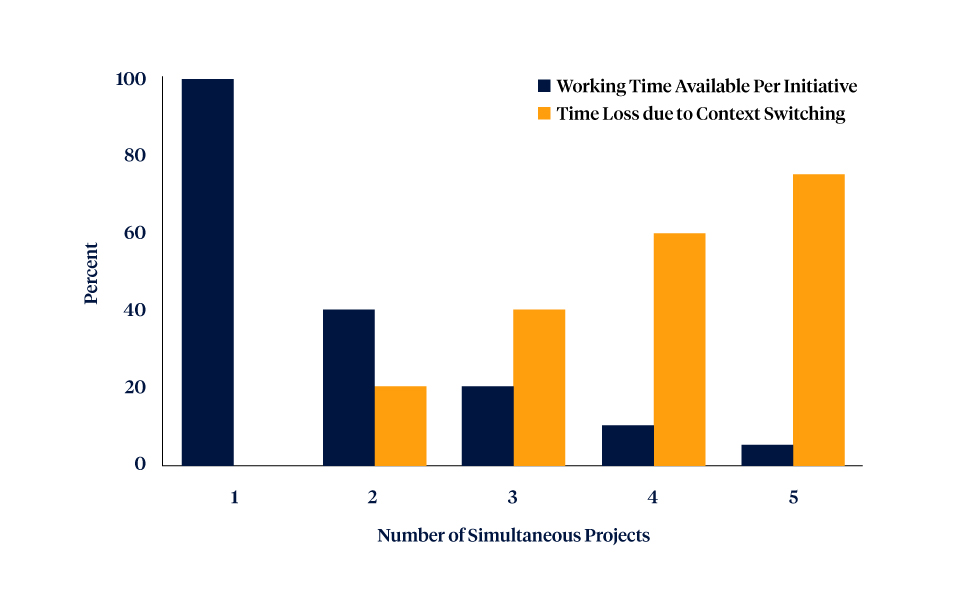Protecting Productivity: 6 Ways to Avoid Context Switching at Work
Table of Contents
Modern work is becoming a tale as old as time. You log on in the morning, check your email and social accounts, and then spend the rest of your day toggling between apps and communication platforms. You need to concentrate on a significant project that requires intense focus, but as soon as you dig in, the dings begin, and you’re forced to switch gears.
You end your day frustrated because you never got a chance to work on your most important assignment. It’s pushed off until tomorrow, but the pattern starts over. Welcome to the modern-day bedlam of context switching—the rapid shifting of attention between projects and tasks, all in the ill-fated pursuit of getting more done.
Like most of us, you probably contend with this disruption daily. And as the week winds down, you realize that you’ve been incredibly busy but haven’t been very productive. Your frustration spikes, and you vow that next week will be better.
Shallow Work versus Deep Work

Cal Newport, author of Deep Work
While it’s impossible to escape context switching entirely, it’s essential to understand its negative impact and make a plan to lessen that effect. Cal Newport, American professor of computer science, makes an important distinction in his book Deep Work between two types of professional endeavors: shallow work and deep work. And while both are necessary for success, they vary significantly in how your brain completes them.
Newport defines deep work as those activities performed in a state of acute concentration that push our cognitive capabilities. When in deep work, we can master complicated information quickly and produce better deliverables. Three additional benefits of regularly engaging in deep work include the following:
- New skills are acquired faster
- Fewer deadlines are missed
- Productivity rates tend to be higher
Science has also proven there is merit to Newport’s theory. As we intensely focus without interruption, the connections between the neurons in our brain fire faster to support learning. This activity creates the optimal learning environment known as flow state, the mental state in which a person performing an activity is fully immersed in a feeling of energized focus, full involvement, and enjoyment in the process of the activity.
But what happens when your flow state is interrupted? A recent study conducted from the University of California, Irvine indicated that the average person takes 23 minutes and 15 seconds to refocus after a singular interruption. Multiply that by the average number of daily interruptions and you’ve got a significant hit to productivity on your hands.
On the contrary, shallow work is not nearly as cognitively demanding. Examples include answering emails, completing expense reports, and routine follow-ups. Newport describes shallow work as non-cognitive, logistical, or minor duties performed in a state of distraction. And while it’s likely you’ll always have some level of administrative burden in most jobs, if you could assign yourself time to complete these less strenuous activities, you could protect the blocks of time you’ve set aside for deep work.
Below are five strategies you can use to prioritize high-value work, aka deep work:
1. Understand the Difference between Urgent and Important
A recent study in the Journal of Consumer Research made a curious observation: our attention is instinctively drawn to time-sensitive tasks over less urgent tasks, even when the less urgent task offers more significant rewards. The psychological quirk—called the “Mere-Urgency Effect” explains why humans struggle with task and time management. The study asserts that we’re more likely to prioritize projects with a deadline over tasks without one, regardless of their value.
To mitigate this tendency, try using a prioritization framework. For example, the
The Time Management Matrix (aka the Eisenhower Method) is a tool that can help you identify time wasters and carve out more time for the projects that matter most. The matrix enables you to categorize your work tasks into the following four categories:
- Urgent and important tasks/projects to be completed immediately.
- Non-urgent and important tasks/projects to be scheduled on your calendar.
- Urgent and unimportant tasks/projects to be delegated to someone else.
- Non-urgent and unimportant tasks/projects to be deleted.
Once you can categorize your tasks in this manner, you can then block out uninterrupted blocks of time to attend to the most important. That way, when an interruption occurs, you can refer to your categorizations and determine if it’s necessary to context switch.
2. Evade the Collaboration Tax
If initiatives aren’t planned properly, it raises the risk of interdependencies and redundancies, creating an atmosphere ripe for inefficiencies. For a project to proceed smoothly, leaders must manage their resources strategically from the beginning; there must be an optimal match between incoming work and availability. And even if a resource is available, they must have the right skill set needed for the project. Otherwise, you may wind up with too many people assigned to the initiative, thereby working with “too many cooks in the kitchen.”
When projects are over-allocated, it immediately plants the seeds for disruption down the road. In other words, you pay the “collaboration tax” in hours spent aligning more contributors than needed on the project. You don’t need to spend extra time herding sheep. The miscalculation often results in more meetings, confusion, and overhead (i.e., shallow work). And yes, you guessed it, context switching.
3. Set Aside Time for Shallow Work When your Energy is Lowest
As the old saying goes, if you can’t measure it, you can’t manage it. That’s why it’s important to monitor your internal triggers that may lead to context switching. Even if you’ve done this activity before, try it again now. These triggers probably look quite different than they did a few years ago as more workers solidify their status as hybrid employees. Figure out how your habits have changed and identify the times of day when your energy is waning.
As a first step, start a daily work journal to understand when you’re most likely to veer off course. Do you always need a coffee break halfway through the morning? Or 10 minutes on either side of a meeting to prepare/decompress? Log your habits in a work journal and then look for patterns.
Next, commit to accomplishing non-urgent/less important tasks during the times you’ve set aside for shallow work. For example, you don’t always have to answer Email or Slack messages in real-time, especially if you’re deep in concentration. At first, you may experience a little anxiety, or even FOMO, when you intentionally don’t reply. Still, if you’ve planned to answer later, you eventually reduce that feeling of urgency and protect your dedicated focus time.
4. Prioritize Strategic Breaks
Whenever possible, avoid mentally draining yourself. If you find yourself pushing well past your designated block for deep work, make sure you take a break. This type of context switching is essential to optimize your efforts. That way, you’ll reduce the chance of making careless mistakes due to fatigue.
Test out a few techniques and do what works best for you. If, instead of focusing for longer blocks of time, you work best with shorter, more regular breaks, try the Pomodoro Technique. This method is a time management system that encourages people to break their workday into 25-minute chunks separated by five-minute breaks known as pomodoros. After around four pomodoros, you take a longer break of about 15 to 20 minutes. This technique might be ideal for those who can’t wait long periods to return real-time messages.
5. Evangelize Deep Work to your Boss
It’ll be essential to get your boss on board with deep work so there’s no miscommunication about how you’re spending your time. Plan to leverage a 1:1 for this discussion, so you can talk through any potential challenges honestly and weigh the benefits against any perceived drawbacks. After all, optics matter.
Once you’ve gained managerial support, determine the appropriate ratio between your deep and shallow work. If it’s a 60/40 split, communicate that to your team so they understand your goals. And as you begin this new allocation, tell your boss if there are specific ways they can support your efforts. At the end of the day, providing deep value to your company is your shared goal and responsibility.
Initially, shifting strategy toward investing in long-term impact may feel unnerving. We’ve all become accustomed to the convenience of constant connectivity, but we also haven’t been measuring the cost we’ve paid to do so. Remind your boss that, ironically, many companies make little effort to understand the true cost of initiatives; even though it’s been proven that by reducing the number of context shifts, you gain back more productive hours, which ultimately benefits the business.
Prevent context switchingResource Management
Monitor employee capacity and allocations in real time.

For example, according to American psychologist Gerald Weinberg, every time you switch between tasks, the transition itself reduces your general productivity by 20–80%. Weinberg notes in his book Quality Software Management: Systems Thinking how the rates exponentially increase as you continue to jump from project to project:
- Concentrate on a singular task at a time = 100% of your productive time available
- Switching between two tasks at a time = 40% of your productive time for each and 20% lost to context switching
- Switching between three tasks at a time = 20% of your productive time for each and 40% lost to context switching
6. Institute Quiet Hours
Once you’ve experienced the benefits of strategically not allowing context switching to rule your day, you’ll want to share the knowledge. Talk to your People Ops Team or HR about instituting “quiet hours,” blocks of time dedicated to deep work. Below are some best practices to consider around instituting quiet hours:
- Make an Announcement – Gather your employees and officially announce the program’s launch. Explain the rationale for the policy and describe the many benefits it will bring to the workplace. Make sure to allow time for questions.
- Bookend the Week – Instilling quiet hours at the beginning and end of every week helps employees transition. For example, early Monday meetings may force employees to prepare over the weekend, thereby sacrificing their time off. Instead, designate Monday mornings as preparation time for the upcoming week. Similarly, reserve Friday afternoons for project catch-up.
- Set Company-wide Reminders – Use your communication platform to remind the team via a note or post that quiet hours are currently underway. Ask employees to regularly block off the quiet hour slots in their calendars to ensure the time isn’t booked by external stakeholders.
In a Nutshell
Businesses prioritizing deep work leverage their employees’ most important resources– their time and attention. Armed with the knowledge of how to work deeply, you’re much more apt to achieve success at work by solving the challenges that arise with the power of focus.









